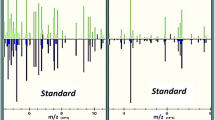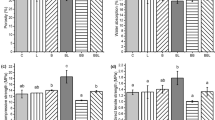Abstract
The self-bioremediation in cementitious composite material is one of the most interesting avenues relating to damage management and self-life of constructions, which needs to be cogitated. The self-bioremediation of a microbial protein-impregnated cementitious material has been explored in this work. The bioremediase protein was isolated from a hot spring bacterium (BKH1) and incorporated at three different concentrations into commercial Pozzolana cements that are widely used for mortar sample preparation. Artificial cracks were generated within the mortar samples by applying partial breaking load (50 %) and the samples were cured under water for different days. Image analysis by Crackscope and microstructure analysis by field emission scanning electron microscope ascertained the formation of irregular crystalline healing material within the cracks of the test samples. X-ray diffractometer and energy dispersive spectra analyses confirmed that the irregular crystalline structures were due to the deposition of new silicate phase (Gehlenite) within the cracks. Increase of ultrasonic pulse velocity and compressive strength, augmentation of sulphate resistance, decrease of chloride permeability and water absorption capacity revealed that there were overall improvement of mechanical properties and durability of the protein-incorporated mortar samples compared to the control (without protein incorporation) mortar samples. This cost effective and eco-friendly self-bioremediation phenomenon observed in mortar is evolved due to the biosilicification activity of bioremediase protein when amended in mortar samples. The exceptional potential of the microbial bioremediase protein for self-bioremediation attribute may add a new dimension in self-healing construction technology in near future.







Similar content being viewed by others
References
Zwaag S (2007) An Introduction of material design principles: damage Prevention versus Damage management. In: Zwaag S (ed) Self healing materials, an alternative approach to 20 centuries of materials science. Springer, Dordrecht, pp 1–19
White SR, Sottos NR, Geubelle PH, Moore JS, Kessler MR, Sriram SR, Brown EN, Viswanathan S (2001) Autonomic healing of polymer composites. Nature 409:794–797
Kessler MK, Sottos NR, White SR (2003) Self healing structural composite material. Composites A 34:743–753
Bang SS, Galinat JK, Ramakrishnan V (2001) Calcite precipitation induced by polyurethane-immobilized Bacillus pasteuri. Enzym Microb Technol 28:404–409
Rodriguez-Navarro C, Rodriguez-Gallego M, Chekroun KB, Gonzalez-Munoz MT (2003) Conservation of ornamental stone by Myxococcus xanthus induced carbonate biomineralization. Appl Environ Microbiol 69:2182–2193
Wiktor V, Jonkers HM (2011) Quantification of crack-healing in novel bacteria-based self-healing concrete. Cem Concr Compos 33:763–770
Nishiwaki T (2006) Development of self-healing system for concrete with selective healing around crack. J Adv Concr Technol 4:267–275
Ghosh P, Mandal S, Chattopadhyay BD, Pal S (2005) Use of Microorganisms to improve the strength of cement-mortar. Cem Concr Res 35:1980–1983
Ghosh S, Chattopadhyay BD, Mandal S (2008) Use of hot spring bacteria for remediation of cracks and increment of durability of structures. Indian Concr J 82:11–16
Ghosh S, Biswas M, Chattopadhyay BD, Mandal S (2009) Microbial activity on microstructure of bacteria modified mortar. Cem Concr Compos 31:93–98
Chattopadhyay BD, Mandal S, Jonkers JM, Guang Y, Majumdar S, Chowdhury T (2010) Microbial protein—an innovative additive for cementitious materials. Int J 3R’s 4:140–145
Majumdar S, Sarkar M, Chowdhury T, Chattopadhyay BD, Mandal S (2012) Use of bacterial protein powder in commercial fly ash Pozzolana cements for high performance construction materials. Open J Civ Eng 2:218–228
Biswas M, Majumdar S, Chowdhury T, Chattopadhyay BD, Mandal S, Halder U, Yamasaki S (2010) Bioremediase a unique protein from a novel bacterium BKH1, ushering a new hope in concrete technology. Enzym Microb Technol 46:581–587
IS 8112 (1989) Specification for 43 grade ordinary Portland cement. Bureau of Indian Standard, New Delhi
IS 650 (1991) Specification for standard sand from natural sources of Ennore, Tamil Nadu District, India for concrete. Bureau of Indian Standard, New Delhi
ASTM C597-02 (2002) Standard test method for pulse velocity through concrete. ASTM International, West Conshohocken
ASTM STP663 (1977) Test and evaluation of Portland and blended cements for resistance to sulphate attack. ASTM International, West Conshohocken
Neville AM (1996) Properties of concrete, 4th edn. Pearson Higher Education, Prentice Hall, Englewood Cliffs
ASTM C1202 (2000) Standard test method for electrical indication of concretes ability to resist chloride ion penetration. Annual book of American Society for Testing Materials Standards, West Conshohocken
Acknowledgements
The financial assistance to this investigation received from Department of Biotechnology, New Delhi, Government of India, and their R&D Grant and file number BT/PR-11289/BCE/08/707/2008, Dated 30 May 2011 is gratefully acknowledged. The PI is also grateful to DBT for continuing the work in two successive projects.
Conflict of interest
None.
Author information
Authors and Affiliations
Corresponding author
Rights and permissions
About this article
Cite this article
Sarkar, M., Chowdhury, T., Chattopadhyay, B. et al. Autonomous bioremediation of a microbial protein (bioremediase) in Pozzolana cementitious composite. J Mater Sci 49, 4461–4468 (2014). https://doi.org/10.1007/s10853-014-8143-1
Received:
Accepted:
Published:
Issue Date:
DOI: https://doi.org/10.1007/s10853-014-8143-1




